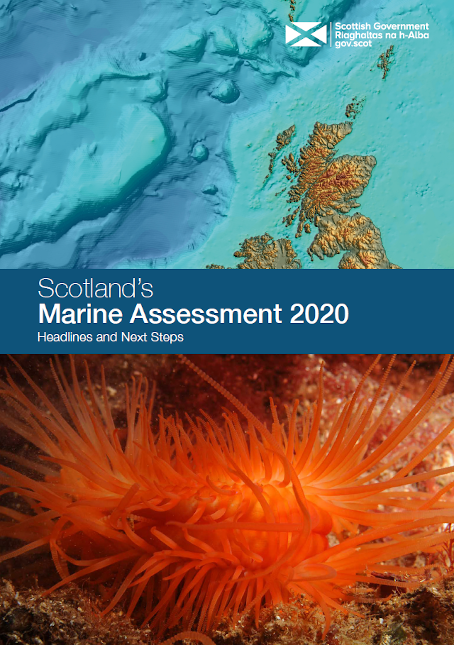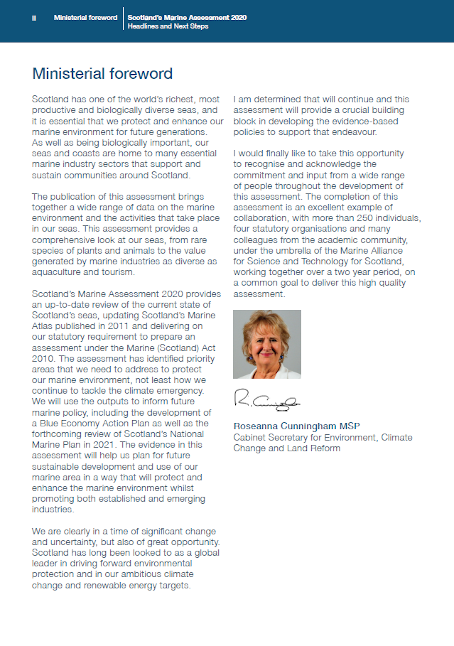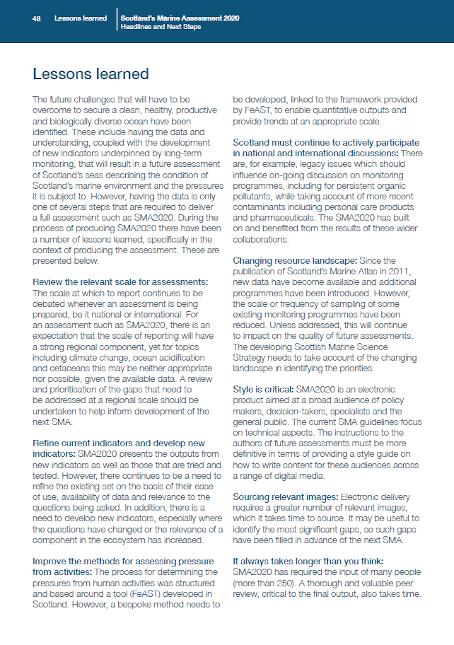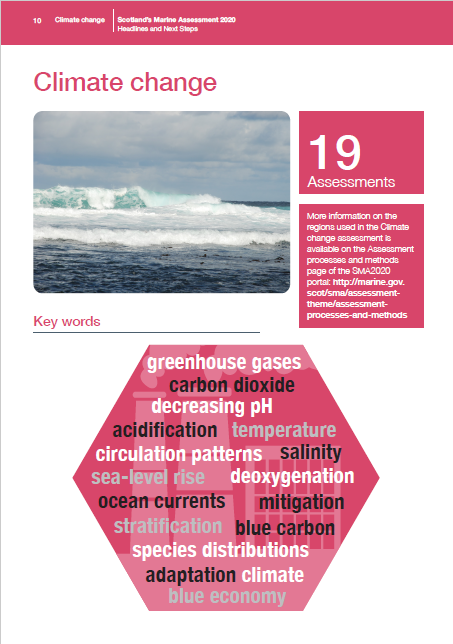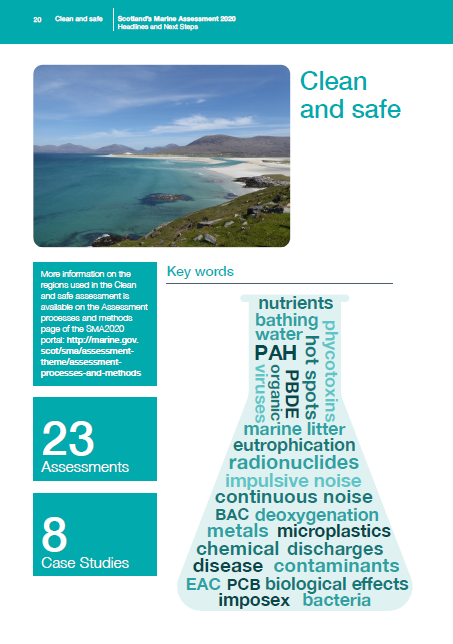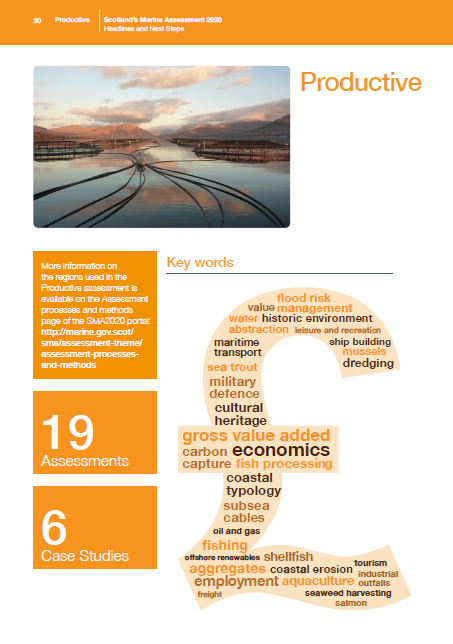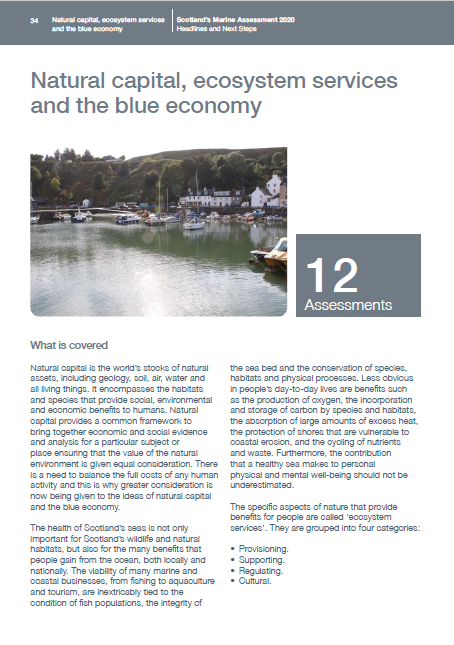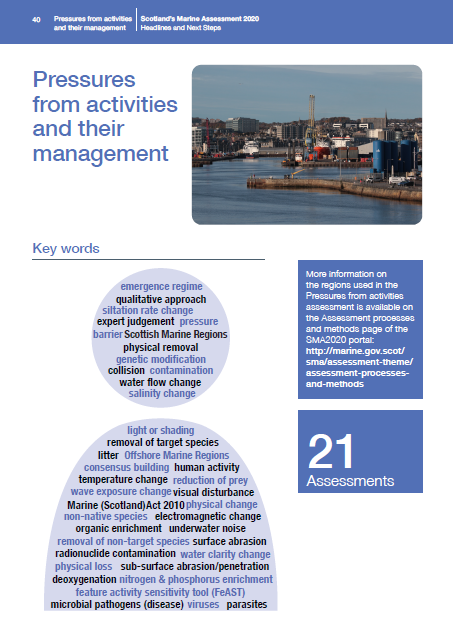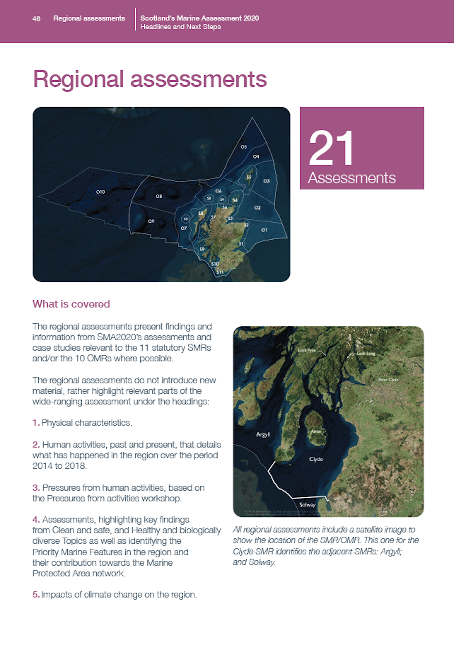Headlines and next steps
Click on the image to see the full printable pdf for each section
The Headlines and Next Steps document summarises the findings of Scotland’s Marine Assessment 2020. Details of the assessment are found on the main portal pages from the menu towards the top of this page.
This document should be cited as: Colin Moffat, John Baxter, Barbara Berx, Kirsty Bosley, Philip Boulcott, Martyn Cox, Lyndsay Cruickshank, Katie Gillham, Venetia Haynes, Ashley Roberts, David Vaughan & Lynda Webster (Eds.). (2021). Scotland's Marine Assessment 2020: Headlines and next steps. Scottish Government.
Image references:
© Ben James, NatureScot, Extent of physical disturbance (broken shells, decaying material on recently dredged sea bed in Loch Carron) (page 29);
© Colin Moffat, Aberdeen Harbour (pages 6 and 40), Stonehaven Harbour (pages 6 and 34), Shipping activity results in underwater noise (page 43), Offshore windfarm (page 44), Sunnyside primary school students (back cover);
© David Paterson, University students (back cover);
© Deep Links Project, Cold water coral reef (pages 3 and 27);
© Graham Saunders, NatureScot, Flame shells (front cover), Stalked jelly fish on seagrass (page 24);
© Helen Cox, Luskentyre from west of Seilebost (page 20);
© John Baxter, MarClim survey in Orkney (page 3), Ocean waves crashing (pages 6 and 10), Waves in Orkney (page 16), Intertidal seagrass (page 28); Waders (oystercatchers) (page 28), Sunset (page 49);
© John Dickenson, waterfowl (great northern diver) (page 28);
© Lisa Kamphausen, NatureScot, Wider fish community (page 28), Maerl bed (page 35);
© Lorne Gill, NatureScot, Puffin and sandeels (page 27), Seabirds (puffin in flight) (page 29), Bottlenose dolphin (page 28);
© Martyn Cox, MV Clansman arriving Loch Maddy (page 33);
© Mònica Arso, Sea Mammal Research Unit, Minke whale (page 28), Grey seals hauled out in the summer (pages 27 and 28);
© National Oceanographic Centre, Deep-sea fish (orange roughy on coral reef) (page 29);
© NatureScot, Seagrass bed (page 26), Biogenic habitats (horse mussel bed) (page 29), NatureScot diver surveyor (page 47);
© Orkney Harbour Authority, Buoy inspection for non-native species (page 27); Cruise ships gathering can lead to a busy day (Hatston Pier, Orkney 2015) (page 33);
© Richard Shucksmith, NatureScot, Crab (page 38);
© Sarah Brown, Non-native species (carpet sea squirt) (page 29);
© Scottish Association for Marine Science, Bathymetry based on GebcoCE and GTOPO30 data sets (front cover);
© Sea Mammal Research Unit, Moulting harbour seals (page 29);
© SEPA, A coastal metal recycling facility (page 21), Inshore fish (various salinity) (page 28);
© Crown Copyright 2021, Beach litter on Torry beach, Aberdeen, after storm Frank (page 3), Scottish residents have a huge appetite for learning about the marine environment (page 3), CTD (Conductivity, Temperature and Depth) deployment at sunset (page 17), Salinity measurement (page 19), Sea outfall sign (page 23), Plankton (meroplanktonic organisms) (page 29), Salmon jumping during upstream migration (page 29), Winter sun on Loch Creran (salmon farm) (page 30), Hywind turbine (page 31), MASTS one day pressures workshop (page 44), Shetland-registered demersal trawler towing in the North Sea (page 5), Prawn trawler fishing to the west of Scotland (page 33), Fishing vessel hauling its net (page 43).


